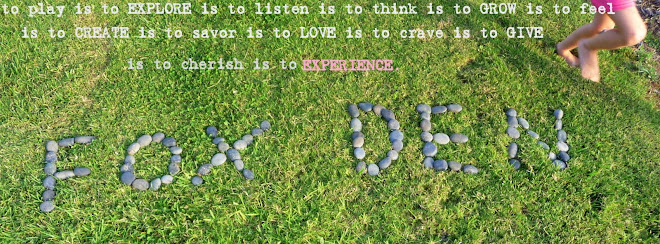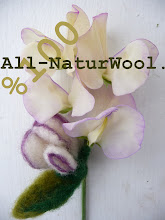 The kids helped take care of a baby mockingbird a few months ago. While the kids' dad was on a job site, he witnessed a dog picking up a baby bird from beneath a tree. Needless to say, the dog wasn't exactly gentle, and the bird's wing suffered some injuries (an open wound, missing fuzz and feathers). We nursed his wounds and kept him in a cage at home, feeding him meal worms, baby bird formula, and fruit (he loved grapes!). The little guy (or girl?) became quite friendly and was pretty finger-tame. Once he was old enough to fly and his wound was healed, we let him go--much to my son's dismay. He held the little mockingbird in his hand, kissed him, and told him to "fly away!" We spotted our bird on a telephone wire being greeted by a fellow mockingbird with a friendly nudge before flying off together. Here is a story I wrote and illustrated for the kids, with some added dramatizations.
The kids helped take care of a baby mockingbird a few months ago. While the kids' dad was on a job site, he witnessed a dog picking up a baby bird from beneath a tree. Needless to say, the dog wasn't exactly gentle, and the bird's wing suffered some injuries (an open wound, missing fuzz and feathers). We nursed his wounds and kept him in a cage at home, feeding him meal worms, baby bird formula, and fruit (he loved grapes!). The little guy (or girl?) became quite friendly and was pretty finger-tame. Once he was old enough to fly and his wound was healed, we let him go--much to my son's dismay. He held the little mockingbird in his hand, kissed him, and told him to "fly away!" We spotted our bird on a telephone wire being greeted by a fellow mockingbird with a friendly nudge before flying off together. Here is a story I wrote and illustrated for the kids, with some added dramatizations.
 I liked Little Mockingbird so much, that one day I let him sit on my train table while I played trains. He watched as I pushed my steam engines along the tracks, and then he carefully backed his way into the engine shed. “Silly Little Mockingbird,” I said, “that’s not a birdie house! That’s where trains go when they are all done puffing on the tracks!” Little Mockingbird just sat inside looking out at me.
I liked Little Mockingbird so much, that one day I let him sit on my train table while I played trains. He watched as I pushed my steam engines along the tracks, and then he carefully backed his way into the engine shed. “Silly Little Mockingbird,” I said, “that’s not a birdie house! That’s where trains go when they are all done puffing on the tracks!” Little Mockingbird just sat inside looking out at me.  He was so quiet, I forgot he was there, until he squawked at the train I was pushing around. “You must be bored, Little Mockingbird,” I said. Gently, I scooped him up and gave him a tiny kiss. But, he squawked again! “What are you squawking at, Little Mockingbird?” I asked. He was looking at my toy train. “You want to go for a ride, Little Mockingbird?”
He was so quiet, I forgot he was there, until he squawked at the train I was pushing around. “You must be bored, Little Mockingbird,” I said. Gently, I scooped him up and gave him a tiny kiss. But, he squawked again! “What are you squawking at, Little Mockingbird?” I asked. He was looking at my toy train. “You want to go for a ride, Little Mockingbird?”  Little Mockingbird stopped squawking when I put him on top of the train. He just sat right down as if he had been waiting to sit there all along. Slowly, I pushed the train along the tracks. “Toot, Toot!” I said. “Peep, Peep!” said Little Mockingbird.
Little Mockingbird stopped squawking when I put him on top of the train. He just sat right down as if he had been waiting to sit there all along. Slowly, I pushed the train along the tracks. “Toot, Toot!” I said. “Peep, Peep!” said Little Mockingbird. Little Mockingbird also liked my sister’s tea set. He made himself comfortable and peered out at me as I pretended to pour tea. “Silly Little Mockingbird! That’s not a nest! That’s a teacup!” I exclaimed.
Little Mockingbird also liked my sister’s tea set. He made himself comfortable and peered out at me as I pretended to pour tea. “Silly Little Mockingbird! That’s not a nest! That’s a teacup!” I exclaimed.He squawked when I took a sip from my cup. “Are you thirsty, Little Mockingbird?” So, I filled a teacup with some water--just in case he wanted a sip, too.
 I found out Little Mockingbird liked to “help” me make pictures, just like my little sister. When I was busy cutting up pieces of blue paper and pasting them on green paper, Little Mockingbird started to peck at the pieces that dropped from my scissors. “Silly Little Mockingbird, that’s not birdie food, that’s paper!” So, at lunch time, I shared some of my grapes with him, instead.
I found out Little Mockingbird liked to “help” me make pictures, just like my little sister. When I was busy cutting up pieces of blue paper and pasting them on green paper, Little Mockingbird started to peck at the pieces that dropped from my scissors. “Silly Little Mockingbird, that’s not birdie food, that’s paper!” So, at lunch time, I shared some of my grapes with him, instead.
When I was all done putting away the tea set, I found Little Mockingbird sitting next to my toy duckie. They were holding wings. “Do you miss your brother and sister birdies?” I asked. “Well, silly Little Mockingbird! That’s not your brother or sister—That’s my Quackaroo!”

One day, when play time was all done, I couldn’t find Little Mockingbird. “Are you in the engine shed, Little Mockingbird? N-o-o-o… Are you in a tea cup? No-o-o. Are you holding wings with my Quackaroo? No-o-o… Are you pecking paper? No-o-o… Where are you, Little Mockingbird?”
There he was! He had snuggled himself up next to one of my puppets and fallen asleep. “Little Mockingbird, that’s not a momma bird, that’s my owl puppet!” I whispered. Quietly, I crawled under my blanket and fell asleep, too.

After breakfast one morning, Mama told me it was time to let Little Mockingbird go. “No! He’s my Little Mockingbird!” I protested. She explained how Little Mockingbird would have all the trees to land in, and the whole sky to fly in, so his world would be much bigger. He would be a happy birdie.
I cupped Little Mockingbird in my hands, gently kissed the top of his soft head, and said “Fly away, Little Mockingbird!” And he did.

Little Mockingbird flew so fast and so far away, I almost couldn’t see him. But, there he was, at the top of a tree across the street. Right away, another mockingbird flew by and landed right beside him. The two birdies fluttered their wings and touched their beaks together, as if greeting each other with a kiss. “Little Mockingbird found his Mama!” I laughed. And I knew my mama was right—he would definitely be a happy birdie outside in the sky and the trees.

What If You Find a Baby Bird?
First, always tell a grown-up if you find a baby bird before you do anything. Be careful not to touch the bird with your bare hands. Next, decide if the baby bird needs your help. Most of the time, it is best to leave the baby bird alone so the mamma and daddy bird can keep it fed and cared for.
If the baby bird is not hurt and has a fair amount of feathers, just carefully put it in a safe spot in the nearest tree. If it is not hurt and doesn’t have any feathers yet, then you can make a nest yourself and attach the nest up in a safe spot in the tree closest to the spot where the baby bird was found.
Make a nest out of an empty berry basket or cut a water bottle in half—line it with tissue paper. Using duct tape or a nail, attach your nest to the tree in a safe spot out of the direct sun and, if possible, high enough that dogs or cats won’t disturb it. Leave the baby bird in your nest, and watch from a distance, so the parents won’t be afraid of returning. Don’t worry, the mommy birds don’t get scared off by your scent—that’s just an old wives’ tale.
If the baby bird was found injured, weak or shivering, or huddled with its feathers all fluffed out, or if its parents were injured, then it will need your care. Do not give it liquid, because it is too young. Keep the baby bird in a safe, quiet place, like a shoe box with holes punched in the lid. Baby birds are fed up to 5 times in one hour, so it will probably be hungry. To feed it, try soaking dry cat or dog food so it is the consistency of tooth paste, then hold a pea sized ball of the paste over the birdie’s beak so it will gape (look upward with its beak open wide). Stuff the paste in its open mouth. Don’t force the food down the baby birds throat. Generally, if he stops gaping, he’s no longer hungry. There is baby bird formula available at pet stores, which is a powder that can be made into a paste as well.
Contact your local wildlife conservation society immediately for further assistance and long-term care. Remember, even though it seems like it would be fun to keep a wild bird for a pet, they may have special health concerns and are a big responsibility. More importantly, a special permit is required in some states (including California) to raise wild birds.












1 comment:
Jen, I love this! The illustrations and the story is fantastic. It's great that you end it with instructions for a child if they find a bird in distress. I hope you publish it. Thanks for sharing.
Post a Comment